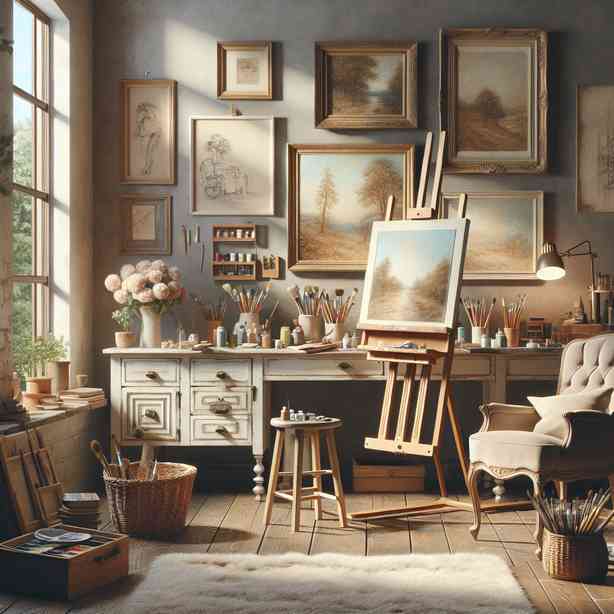
Creating a studio that feels like home involves an intricate interplay of personal style, functionality, and emotional connection. Many of us dream of a space that not only serves its practical purpose as a studio but also envelops us in comfort and inspiration. This journey begins with understanding the fundamental components that contribute to making a studio a true home.
Firstly, one must consider the layout of the studio. An effective layout is essential in shaping the atmosphere of the space. Open plans tend to create a sense of freedom and flow, while defined areas can offer a sense of structure and organization. One of the best approaches is to create designated zones for different activities, such as work, relaxation, and creativity. Consider using furniture to delineate these spaces effectively. For instance, a well-placed bookshelf or a strategically positioned sofa can create boundaries without needing physical walls.
Moreover, natural light is deeply influential in crafting an inviting atmosphere. Large windows or a strategically placed mirror can maximize the natural light entering the studio. Sunlight not only enhances the aesthetic appeal but also boosts mood and productivity. Thus, it’s worthwhile to prioritize the positioning of your workspace near windows or light sources.
Color choices also play a pivotal role in how a studio feels. Warm hues can create a cozy, inviting environment, while cooler tones may bring a sense of calm and tranquility. The key is to choose a color palette that resonates with your personality and fosters creativity. For example, vibrant colors could stimulate energy and innovation, while soft pastels might provide a soothing backdrop that supports focus and reflection.
In any studio setup, personalization is paramount. Your studio should reflect who you are and what you love. This means incorporating elements that inspire you, such as artwork, photographs, or objects that hold sentimental value. Displaying items that resonate with you creates an emotional connection with the space, enhancing your overall experience. Moreover, your creativity will naturally flourish in an environment where you feel a sense of belonging.
Functionality is another crucial element of a studio that feels like home. It is important to ensure that the space is not just aesthetically pleasing but also serves its intended purpose efficiently. This includes having an ergonomic workspace that promotes comfort during long hours of work. Invest in a quality chair and desk that suit your working style, and organize your materials in a way that is both accessible and visually pleasing.
Furthermore, storage solutions can significantly impact the functionality of your studio. Clutter can quickly turn a harmonious space into a chaotic one. Consider utilizing vertical space with shelves and cabinets or opting for multi-functional furniture that provides both style and storage. This balance ensures that your creative workspace remains organized, allowing for a seamless flow of ideas.
Sound is often an overlooked aspect when curating an inviting studio environment. Depending on your personal preferences and the activities you engage in, sound can either enhance or detract from your space. For instance, incorporating soft background music or ambient sounds can foster focus and creativity, while silence can provide the tranquility necessary for deep concentration. It might be helpful to invest in quality speakers or soundproofing options, depending on your needs.
As you establish a sense of home in your studio, do not underestimate the influence of greenery. Plants not only beautify a space but also contribute to a healthier atmosphere. They can purify the air, boost your mood, and even spark your creativity. Incorporating plants can be as simple as introducing a few small pots on your desk or larger statement pieces in the corners of the room. Choose plants that thrive in your studio’s lighting conditions, and enjoy the natural vibrance they bring.
Creating a welcoming environment goes beyond aesthetics; it involves fostering an atmosphere conducive to collaboration and community. If your studio allows, consider setting up a space for gathering with friends or fellow creatives. A small table with comfortable seating can facilitate brainstorming sessions, discussions, or even casual hangouts. The essence of a studio that feels like home often lies in the relationships and experiences cultivated within its walls.
In today’s digital era, technology also plays a significant role in ensuring your studio meets your needs. Be mindful of the gadgets and tools you introduce into your workspace. Opt for devices that not only enhance productivity but also integrate seamlessly into your aesthetic. Wireless tools can minimize clutter, helping maintain a clean and organized environment, which is essential for creativity to thrive.
As you navigate the process of making your studio feel like home, it is important to remain adaptable. Your needs and preferences may evolve over time, and your studio should be a reflection of that. Regularly reassessing and updating the elements in your space can lead to fresh inspiration and comfort.
Ultimately, the journey to making your studio feel like home is a deeply personal one. There is no one-size-fits-all approach; rather, it is about discovering what resonates most with you and allowing your studio to evolve as your source of creativity and expression.
Bringing all these elements together will not only ensure that your studio is a functional workspace but also a sanctuary where creativity can flourish. By dedicating time and effort to curate a space that genuinely feels like home, you will inevitably find greater satisfaction and productivity in your creative endeavors. In the end, your studio has the potential to become a holistic representation of your journey, a safe space that inspires and nurtures your passions, and a home where creativity knows no bounds.


